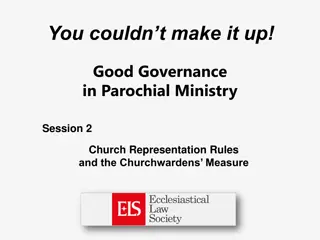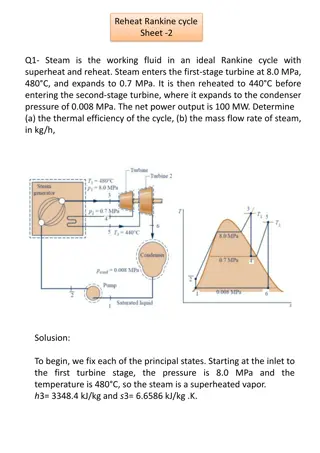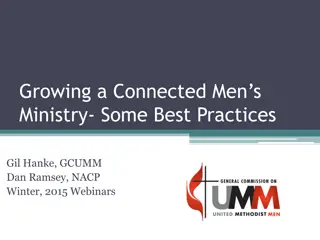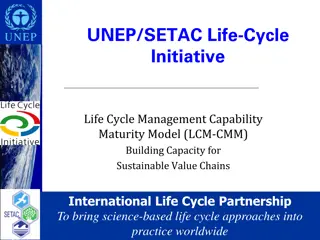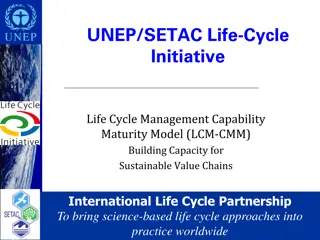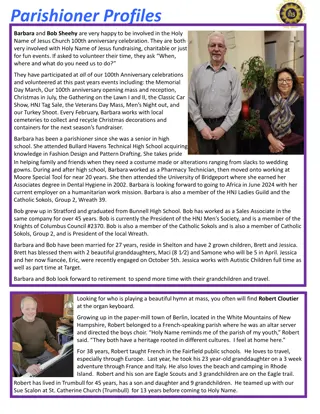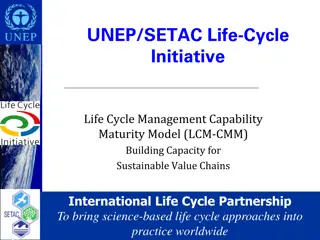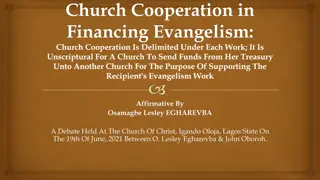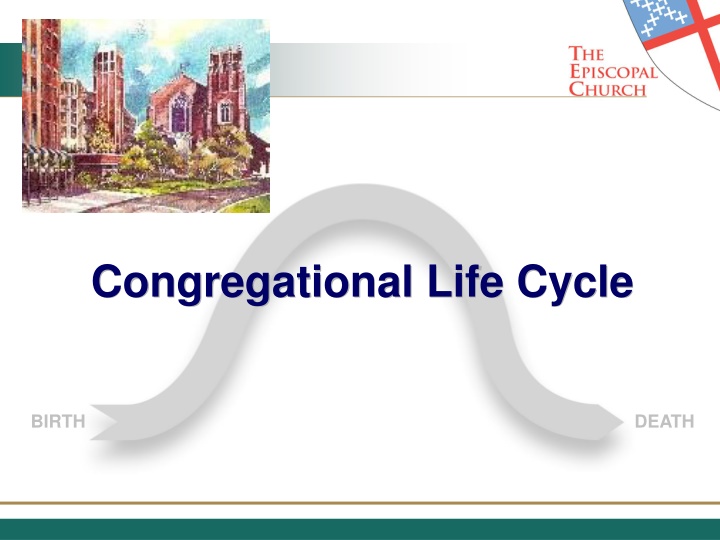
Congregational Life Cycle
Explore the Congregational Life Cycle, including the stages of birth, growth, stability, decline, and death, alongside the organizing principles of vision, relationships, program, and management. Dive into how these principles impact a congregation's journey, from attracting new members to sustaining existing relationships and implementing effective programs. Discover the role of organizing principles in different life cycle stages, from infancy to old age, and understand the importance of management in supporting the vision and goals of a church community.
Uploaded on | 0 Views
Download Presentation

Please find below an Image/Link to download the presentation.
The content on the website is provided AS IS for your information and personal use only. It may not be sold, licensed, or shared on other websites without obtaining consent from the author. If you encounter any issues during the download, it is possible that the publisher has removed the file from their server.
You are allowed to download the files provided on this website for personal or commercial use, subject to the condition that they are used lawfully. All files are the property of their respective owners.
The content on the website is provided AS IS for your information and personal use only. It may not be sold, licensed, or shared on other websites without obtaining consent from the author.
E N D
Presentation Transcript
Congregational Life Cycle BIRTH DEATH
The Congregational Life Cycle STABILITY DECLINE GROWTH DEATH BIRTH
Four Organizing Principles VISION RELATIONSHIPS PROGRAM MANAGEMENT
First Principle: VISION Vision is the current understanding of God s direction for a congregation that is cast by leadership and owned by everyone in the parish. Vision reflects the core values of the congregation. Vision is the fuel or energy that will drive the congregation into the future with hope and a sense of potency.
Second Principle: RELATIONSHIP How the parish attracts new people into the Christian faith journey, helps current parishioners deepen and mature in their faith journey and nurtures relationships within the church community. Evidence of effective relationship experience is an ever-deepening spirituality, widespread ownership of parish activities and developing new leadership.
Third Principle: PROGRAM Programs, ministries and activities embody the vision of the church and reflect the gifts and vocations of parishioners. Effective programs meet real, identified spiritual, social and emotional needs of people in the neighborhood as well as the church community. Evidence of effective programs is that the church is known for the excellence of its programs, ministries and activities.
Fourth Principle: Management Management are those systems that facilitate orderly decision-making, the allocation of resources, integrates new developments and establishes boundaries. Effective management is efficient, well defined and supports the vision, relationships and programs of the church. Effective management is accountable to the congregation as well as the larger church.
Role of Organizing Principle and Life Cycle Maturity Adulthood vRPM VRPM Adolescence Empty Nest VRPm vRpM Childhood Retirement VrPm vrPM Infancy Old Age VRpm vrpM BIRTH DEATH Vrpm m
Shift in Motivating Criteria Maturity Adulthood vRPM VRPM Adolescence Empty Nest VRPm vRpM Childhood Retirement VrPm vrPM Infancy Old Age DEATH VRpm vrpM BIRTH m Vrpm Program and Management Vision and Relationships
Compiled for St. Pauls Episcopal Church of Oakland by Michal Anne Pepper, Ph.D. with materials from George Bullard, D.Min. Lake Hickory Learning Communities and Office of Congregational Development The Episcopal Church Center



